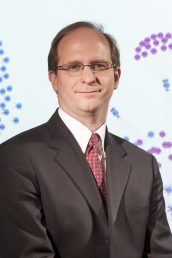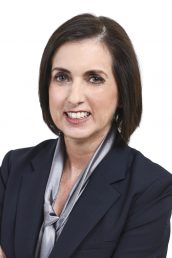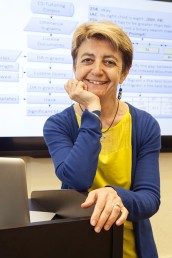Algorithm shows differences between nurse, doctor care
A multidisciplinary team of researchers at the University of Illinois at Chicago has published the first quantitative study on the divergent scopes of practice for nurses and doctors. The study uniquely leveraged computer science technology to compare individual-level patient care provided by nurses and doctors using information routinely documented in the electronic health record.
The researchers analyzed the electronic health records of 58 randomly selected patients who had a medical diagnosis of heart failure and sought care at a single academic medical center over the course of eight years. Each health record included a physician discharge summary, and nursing plans of care were created for the study using the information found in the discharge report.
A computer algorithm developed at UIC was used to identify the key biomedical terms used in each summary and to link synonyms or related terms via a graph traversal — a network representation that shows the integrated relationships of language and health terminology.
The researchers found that only 26 percent of patient records showed an overlap in terms. On average, only four terms between the professions were related to the same concept. Physicians typically used about 27 terms and nurses about 18 terms.
“We’ve created a more unified picture of health care professionals’ perspectives on their patients,” said corresponding author Andrew Boyd, assistant professor of biomedical and health information sciences in the UIC College of Applied Health Sciences. “Previous studies on this topic have been limited by their reliance on qualitative, observation-based data collection or costly survey methods — ours is the first to objectively measure the scope of practice when nurses and doctors care for the same patients.”
Co-author Karen Dunn Lopez, assistant professor in the UIC College of Nursing, says the findings help to illustrate how nurses and doctors focus on different aspects of patient care. The findings also show that synergy between the two groups is needed to achieve the best possible patient outcomes, she says.
“Patients who are hospitalized need hands-on nursing care in addition to the treatments ordered by a physician,” Lopez said. “This is the first evidence of its kind that illustrates how the scope of nursing practice runs parallel to, but independent of, ‘doctor’s orders.'”
Some of the common terms for doctors were highly technical, including “decreased translucency” and “radiographic examination abnormal,” where nursing terms were more likely to focus on symptoms and responses to illness, such as “acute onset of pain.” While the researchers did not expect the language across professions to be identical, they were surprised to see such significant differences emerge based on documentation review alone.
“The collaboration between nurses and doctors is unique in a modern setting in which multiple nurses work with multiple doctors over the course of the numerous shift changes,” Boyd said.
“Because providers are changing, the dynamics of collaboration are also changing — this underscores the importance of the electronic health record as perhaps the single most important communication tool used to coordinate care across disciplines in hospitals today,” Boyd said. “As the algorithm used in the study can be universally applied to any health record, it has incredible potential for identifying gaps in care and even improving quality and quality reporting.”
For example, Boyd says, hospital metrics typically focus on physician care, not nursing care. “This study offers foundational evidence that quality reporting may be more reflective of care and patients’ experiences if it expands to equally include nursing care documentation,” Boyd said.
Lopez agrees and views the findings as proof that there is a need for detailed nursing documentation.
“Without documentation from nurses, health records only show part of the whole,” Lopez said. “I hope this study is viewed as a first step in identifying how the combination of nursing care and medical care work together to improve patient outcomes.”
The findings are published in the International Journal of Medical Informatics.
Barbara Di Eugenio, professor of computer science in the UIC College of Engineering, led the development of the algorithm. Additional co-authors on the study are Camillo Lugaresi, Tamara Macieira, Vanessa Sousa, Sabita Acharya, Abhinaya Balasubramanian, Khawllah Roussi and Michel Burton from UIC; Yves Lussier and Jianrong Li from the University of Arizona; and Gail Keenan from the University of Florida.
This study relied on data from the MedLEE study, which was funded in part by the National Library of Medicine (R01LM008635). The HANDS software discussed in the study is owned and distributed by HealthTeam IQ, of which Keenan is president and chief executive officer.



